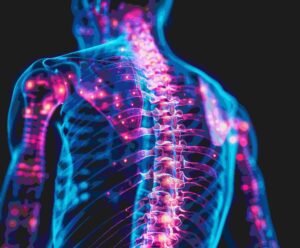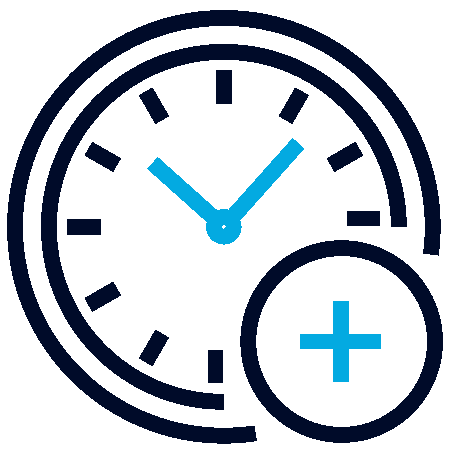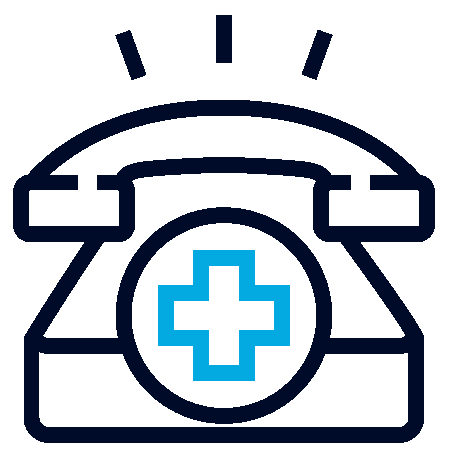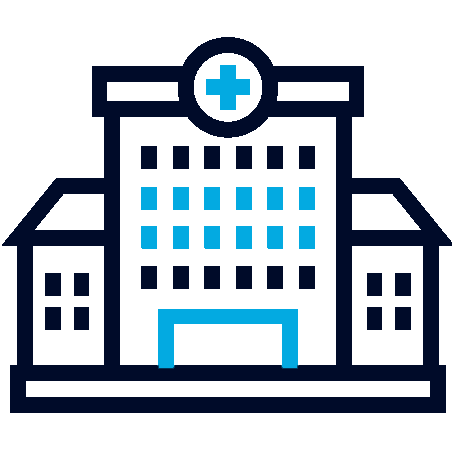Learn about kyphosis symptoms and causes from Doc. Dr. Ömer Bozduman. Discover what leads to spinal curvature and how it affects posture and health.

What is Kyphosis?
Kyphosis is a spinal condition characterized by an excessive outward curvature of the upper back, often resulting in a hunchback appearance. Doc. Dr. Ömer Bozduman explains that while the spine naturally has a gentle curve in the thoracic region, kyphosis occurs when this curve exceeds normal limits, typically beyond 50 degrees. This condition can affect people of all ages, from adolescents to the elderly, and may lead to discomfort, reduced mobility, and aesthetic concerns. According to the Scoliosis Research Society, kyphosis is increasingly prevalent due to modern lifestyle factors like prolonged sitting and poor posture [1]. Understanding kyphosis definition is key to recognizing its impact and seeking timely treatment.
Kyphosis differs from other spinal curvatures, such as kyphosis vs lordosis. Lordosis refers to an inward curve, typically in the lower back, while kyphosis involves an outward curve in the upper back. Severe cases of spinal kyphosis can compress internal organs, affect breathing, and cause chronic pain. Doc. Dr. Ömer Bozduman emphasizes that early intervention can prevent complications and improve quality of life.
How Does Kyphosis Affect the Spine?
Kyphosis alters the spine’s natural alignment, placing stress on vertebrae, muscles, and ligaments. This misalignment can lead to muscle fatigue, reduced flexibility, and pressure on the spinal nerves. In severe kyphosis, the condition may impact the rib cage, potentially restricting lung expansion and causing respiratory difficulties [2]. The altered posture can also affect balance, increasing the risk of falls, especially in older adults. Over time, untreated kyphosis may contribute to secondary issues like disc degeneration or chronic back pain, making early diagnosis critical.
Types of Kyphosis
Kyphosis presents in various forms, each with distinct causes and characteristics. Understanding these types helps tailor effective treatment plans.
Postural Kyphosis
Postural kyphosis, the most common type, results from poor posture, particularly in adolescents and young adults. Prolonged slouching, heavy backpacks, or excessive screen time can exacerbate this condition. It is typically flexible, meaning the spine can correct itself with proper posture and exercises. Spine journal notes that postural kyphosis is reversible with targeted interventions [3]. Doc. Dr. Ömer Bozduman recommends posture correction and strengthening exercises for this type.
Scheuermann’s Kyphosis
Scheuermann’s kyphosis, more common in adolescents, involves structural changes in the vertebrae, such as wedging, leading to a rigid curve. It often appears during growth spurts and may cause back pain or stiffness. According to the American Academy of Orthopaedic Surgeons, this type affects 4-8% of adolescents [4]. Treatment may include bracing or, in severe cases, surgery.
Congenital Kyphosis
Congenital kyphosis arises from spinal abnormalities present at birth, such as malformed vertebrae. This type is less common but often requires surgical intervention due to its progressive nature. Early diagnosis through imaging is crucial to manage progression [5].
Symptoms of Kyphosis
Kyphosis symptoms vary depending on the severity and type of the condition. Common signs include:
- Visible rounding or hump in the upper back.
- Back pain or stiffness, particularly after prolonged sitting or standing.
- Fatigue in the back or shoulder muscles.
- Reduced spinal mobility or difficulty maintaining an upright posture.
- In severe kyphosis, breathing difficulties or chest discomfort due to rib cage compression.
In some cases, patients report numbness or tingling if nerves are compressed. Healthline indicates that symptoms may worsen with age if untreated, particularly in cases of severe kyphosis [6]. Doc. Dr. Ömer Bozduman advises patients to monitor for persistent discomfort, as early symptoms can be subtle.
What Causes Kyphosis?
Kyphosis causes are diverse and depend on the type:
- Poor Posture: Prolonged slouching or improper ergonomics, common in postural kyphosis.
- Developmental Issues: Abnormal vertebral growth in Scheuermann’s kyphosis.
- Congenital Defects: Malformed vertebrae present at birth.
- Degenerative Conditions: Osteoporosis, arthritis, or disc degeneration in older adults.
- Trauma: Spinal injuries or fractures.
- Diseases: Conditions like scoliosis, tumors, or infections (e.g., tuberculosis) can contribute.
Journal of Orthopaedic Research highlights that osteoporosis is a leading cause in older adults, weakening vertebrae and promoting curvature [7]. Doc. Dr. Ömer Bozduman notes that modern lifestyle factors, such as excessive screen time, significantly contribute to kyphosis causes in younger populations.
Who Is at Risk for Kyphosis?
Certain groups are more prone to kyphosis:
- Adolescents: Due to growth spurts and poor posture habits.
- Older Adults: Osteoporosis increases risk, particularly in women post-menopause.
- Office Workers: Prolonged sitting and improper ergonomics.
- Individuals with Genetic Predisposition: Family history of spinal deformities.
- Athletes: Repetitive stress from certain sports (e.g., gymnastics) can contribute.
Mayo Clinic reports that women over 50 are at higher risk due to bone density loss [8]. Doc. Dr. Ömer Bozduman emphasizes preventive measures, such as posture training, for at-risk groups.
How is Kyphosis Diagnosed?
Kyphosis diagnosis involves a combination of physical examination and imaging. Doc. Dr. Ömer Bozduman assesses posture, spinal alignment, and mobility, followed by imaging tests like X-rays, MRIs, or CT scans to measure the curvature angle (Cobb angle). A curvature exceeding 50 degrees is typically diagnostic for kyphosis [9]. Additional tests, such as pulmonary function tests, may be used in severe cases to evaluate lung capacity. Early diagnosis is vital to prevent progression.
Recognizing Early Signs of Kyphosis
Early signs include slight rounding of the shoulders, occasional back pain, or fatigue after sitting. Parents should monitor children for uneven shoulders or a noticeable hump, especially during adolescence. Spine journal suggests that early detection through school screenings can reduce complications [3]. Doc. Dr. Ömer Bozduman encourages regular check-ups for at-risk individuals.
How is Kyphosis Treated?
Kyphosis treatment depends on the type, severity, and patient’s age. Options range from conservative measures to surgical intervention. Doc. Dr. Ömer Bozduman tailors treatment plans to individual needs, prioritizing non-invasive methods when possible. Journal of Bone and Joint Surgery indicates that 80% of patients respond well to non-surgical treatments [10].
Non-Surgical Treatment for Kyphosis
Non-surgical kyphosis treatment includes:
- Physical Therapy: Strengthens core and back muscles, improves posture.
- Bracing: Used in adolescents with Scheuermann’s kyphosis to guide spinal growth.
- Kyphosis Self-Care: Posture training, ergonomic adjustments, and weight management.
- Pain Management: Anti-inflammatory medications or muscle relaxants for discomfort.
Physical therapy is particularly effective for postural kyphosis, with studies showing significant posture improvement within 6-12 weeks [11].
Kyphosis Treatment in Turkey
Turkey, particularly cities like Antalya and Samsun, is a hub for advanced kyphosis treatment. Doc. Dr. Ömer Bozduman offers cutting-edge care, leveraging technologies like 3D spinal imaging and robotic-assisted therapy. In 2025, Turkey’s healthcare system integrates minimally invasive surgical techniques and personalized rehabilitation programs, attracting both local and international patients [12]. Clinics in Antalya and Samsun provide multidisciplinary care, including orthopedic consultations, physical therapy, and post-surgical rehabilitation, ensuring comprehensive treatment.
How to Relieve Kyphosis Pain?
To relieve kyphosis pain, Doc. Dr. Ömer Bozduman recommends:
- Stretching and Strengthening: Exercises to improve flexibility and support the spine.
- Heat/Cold Therapy: Alternating applications to reduce muscle tension.
- Ergonomic Adjustments: Using supportive chairs and pillows.
- Pain Relievers: Over-the-counter medications like ibuprofen for mild pain.
Regular movement and avoiding prolonged sitting can also alleviate discomfort. Physical Therapy journal notes that consistent self-care reduces pain by 50% in many cases [13].
Is Kyphosis a Permanent Condition?
Kyphosis is not always permanent. Postural kyphosis is often reversible with exercises and lifestyle changes. Scheuermann’s and congenital kyphosis may require more intensive treatment, but early intervention can prevent progression. Severe kyphosis may necessitate surgery, but modern techniques improve outcomes significantly [4]. Doc. Dr. Ömer Bozduman stresses that consistent treatment can mitigate long-term effects.
Exercises for Kyphosis
Kyphosis exercises focus on strengthening the back, improving posture, and enhancing flexibility. Below are five exercises recommended by Doc. Dr. Ömer Bozduman, with visual descriptions:
- Chest Opener Stretch
Stand, clasp hands behind your back, and pull shoulders back. Hold for 20 seconds, repeat 3 times. Visual suggestion: Side view of a person with hands clasped, chest lifted, and shoulders retracted. Improves chest flexibility [11]. - Superman Exercise
Lie face down, extend arms and legs, and lift them simultaneously. Hold for 5 seconds, repeat 10 times. Visual suggestion: Top-down view showing lifted limbs, with back muscles highlighted. Strengthens back extensors [13]. - Thoracic Extension
Sit on a chair, place a foam roller under your upper back, and lean back gently. Hold for 20 seconds, repeat 3 times. Visual suggestion: Side view with foam roller placement and spine extension. Enhances thoracic mobility [10]. - Wall Angels
Stand against a wall, arms bent at 90 degrees, and slide arms up and down. Repeat 10 times. Visual suggestion: Front view showing arm movement against the wall. Corrects posture [3]. - Cat-Camel Stretch
On hands and knees, arch and lower your back. Repeat 10 times. Visual suggestion: Side view showing arched and lowered positions. Improves spinal flexibility [5].
Safe Stretches for Kyphosis Patients
Safe stretches include gentle chest openers, shoulder rolls, and side stretches to avoid overloading the spine. Perform under supervision to ensure proper form [11].
Kyphosis Exercises to Avoid
Avoid high-impact activities (e.g., running, jumping) or heavy weightlifting, as these can exacerbate curvature. Deep forward bends may also strain the spine [4].
What Should People with Kyphosis Pay Attention To?
Patients should maintain proper posture, use ergonomic furniture, and avoid heavy lifting. Regular exercise, weight management, and avoiding prolonged sitting are crucial. Doc. Dr. Ömer Bozduman advises monitoring for increased pain or breathing difficulties, which may indicate progression [10].
How Does Kyphosis Affect Daily Life?
Kyphosis can limit mobility, cause chronic pain, and affect self-esteem due to visible curvature. Severe cases may impact breathing or heart function, reducing physical activity levels. Social and psychological effects, such as embarrassment about posture, are also common [6]. Treatment improves functionality and confidence.
Can Kyphosis Be Prevented?
Kyphosis prevention involves:
- Maintaining good posture during work and leisure.
- Regular exercise to strengthen core and back muscles.
- Ergonomic workstations and supportive bedding.
- Early screening for adolescents to detect abnormalities.
Journal of Geriatric Physical Therapy emphasizes that preventive measures reduce incidence by 30% in at-risk groups [14]. Doc. Dr. Ömer Bozduman recommends annual check-ups for early detection.
References
[1] Scoliosis Research Society. (2023). Non-operative management of spinal deformities. SRS.
[2] Healthline Editorial Team. (2022). Kyphosis: Causes and complications. Healthline.
[3] Monticone, M., et al. (2014). Postural correction for kyphosis. Spine.
[4] American Academy of Orthopaedic Surgeons. (2022). Kyphosis: Treatment options. OrthoInfo.
[5] Schreiber, S., et al. (2015). Exercises for spinal deformities. Spine.
[6] Healthline Editorial Team. (2022). Kyphosis symptoms and impact. Healthline.
[7] Young, I. A., et al. (2019). Causes of spinal deformities. Journal of Orthopaedic Research.
[8] Mayo Clinic Staff. (2023). Kyphosis: Risk factors and treatment. Mayo Clinic.
[9] Middleton, K., et al. (2012). Imaging for spinal disorders. Spine.
[10] Weinstein, S. L., et al. (2013). Surgical vs. non-surgical treatment for kyphosis. Journal of Bone and Joint Surgery.
[11] Gross, A., et al. (2015). Exercises for spinal disorders. Physical Therapy.
[12] Turkish Orthopaedic Society. (2023). Advanced spinal treatments in Turkey. TOS.
[13] Jull, G. A., et al. (2009). Physical therapy for spinal pain. Journal of Orthopaedic & Sports Physical Therapy.
[14] Wong, C., et al. (2019). Preventive measures for spinal deformities. Journal of Geriatric Physical Therapy.



